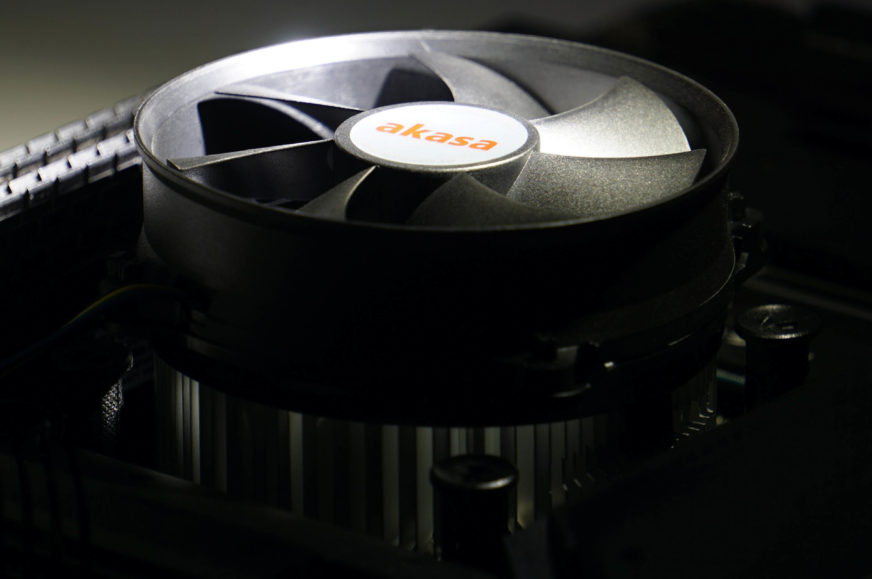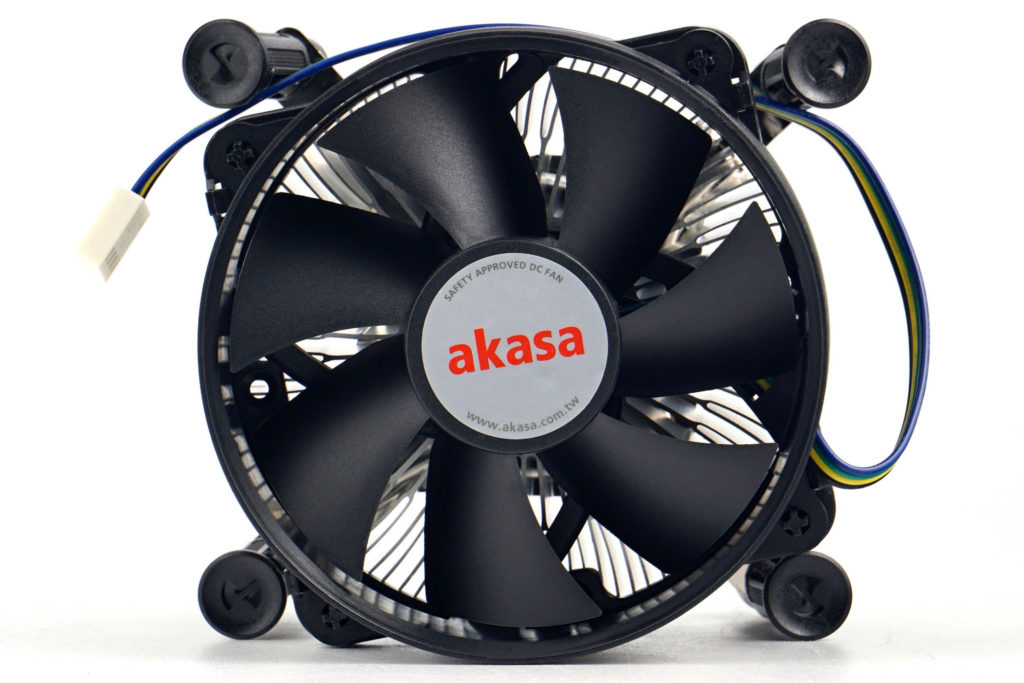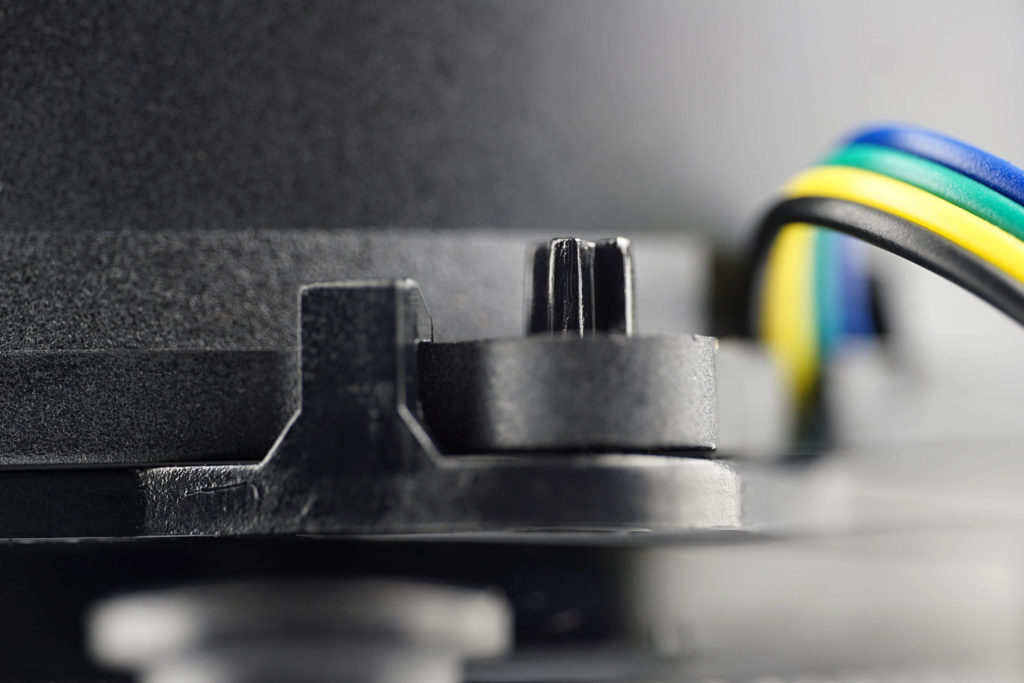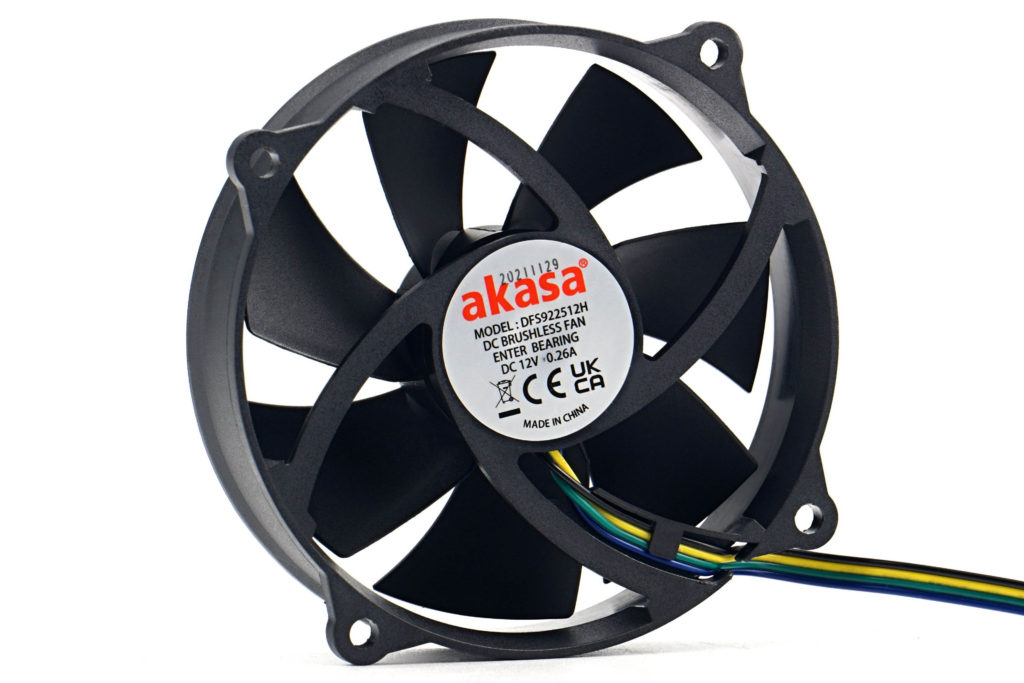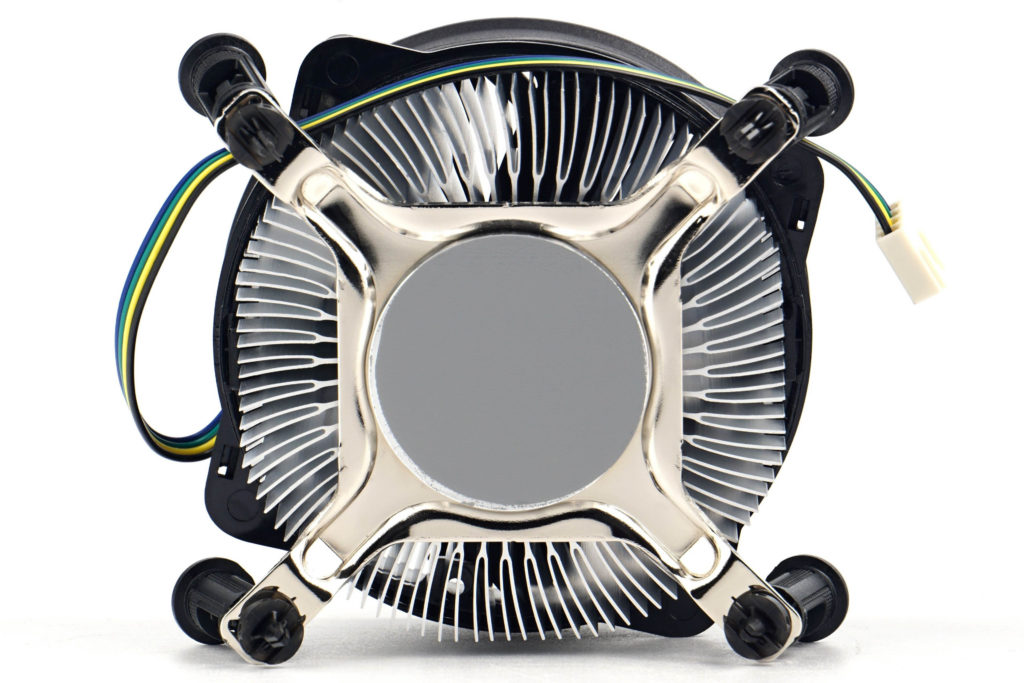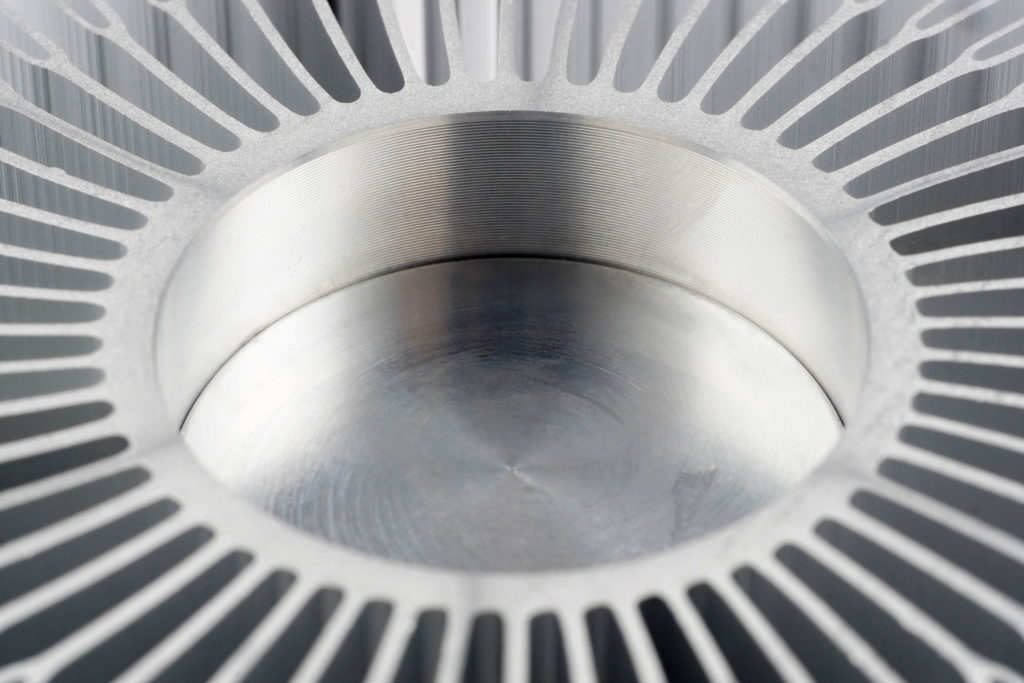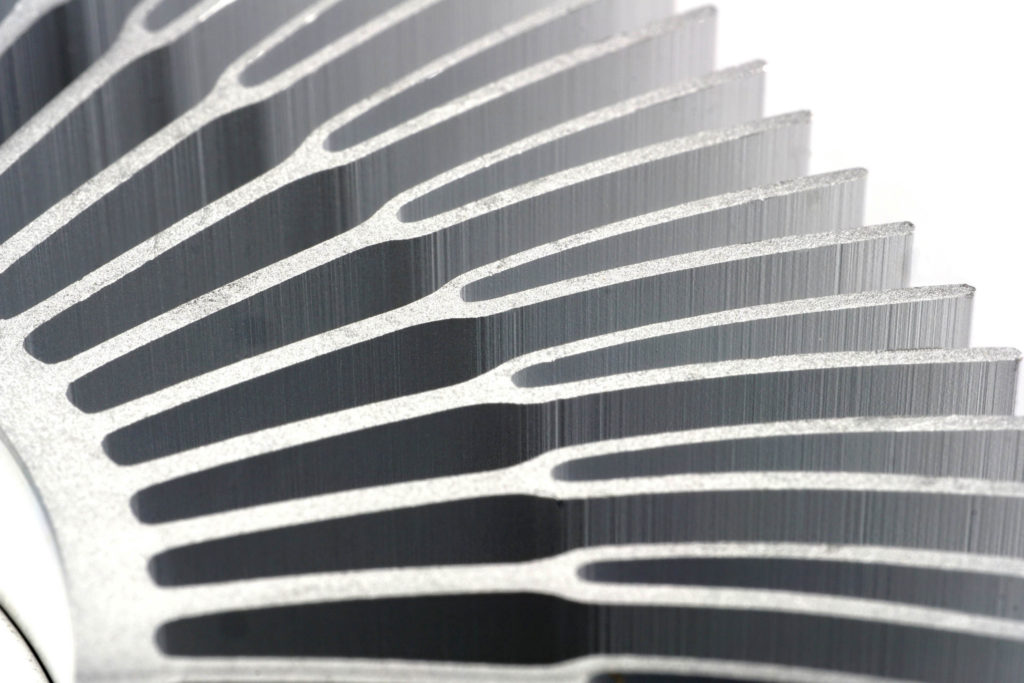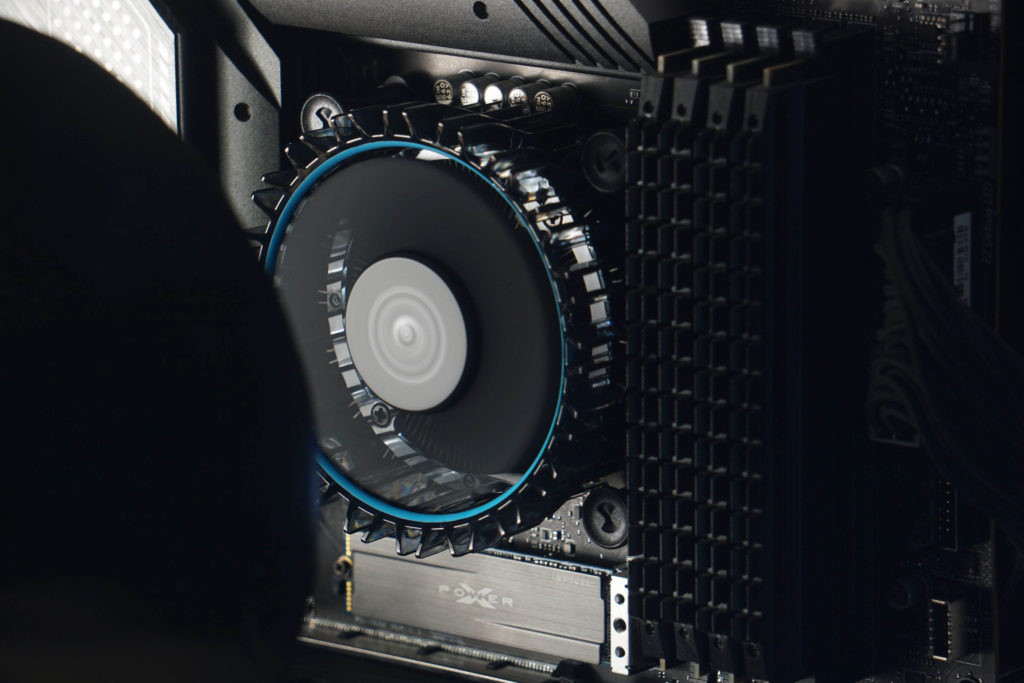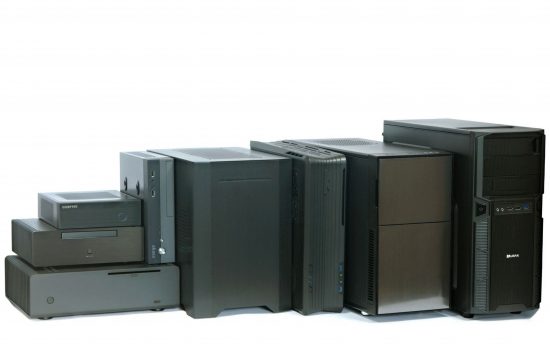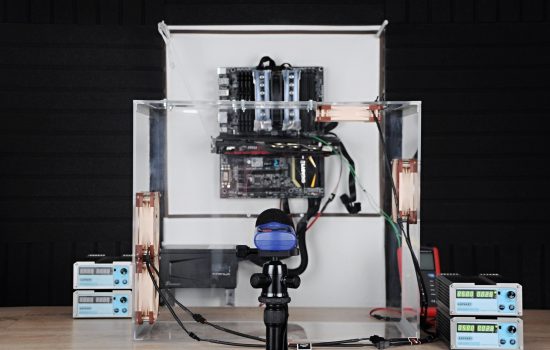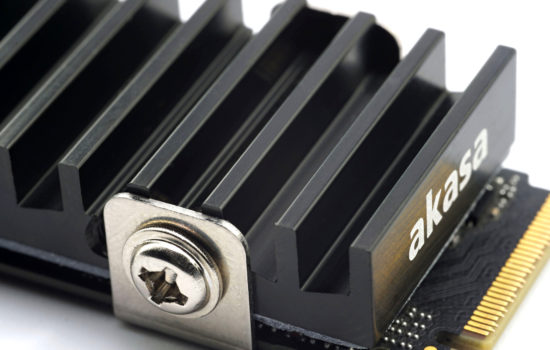Akasa AK-CC6603EP01 in detail
Akasa has been working for a long time on small and simple coolers to serve as a low-cost replacement for bundled solutions. This company was among the first to come out with support for Intel LGA 1700 and even with more options. In this test, we’ll be checking out the AK-CC6603EP01 mid-range model, which takes on not only the competing Arctic Alpine CO, but also both Intel Laminar coolers (RM1 and RS1).
You’ve already read about the trio of new top-flow coolers from Akasa on LGA 1700 in our post-release report. But now we’ll take a closer look at them. Depending on the usage requirements, Akasa has three options on offer. Model AK-CC6601EP01 with a very low profile (26.9 mm), its opposite is the AK-CC6606BP01 with the highest TDP (125W) and we will now look at the AK-CC6603EP01, which is in the middle in both height and cooling performance.
Due to the complicated labeling, in the following text we will often refer to the AK-CC6603EP01 only as the Akasa cooler, which will always mean this model. The cooling power (TDP) is specified at 77 W. Whether this is more or less than the Intel Laminar coolers that ship with the CPUs on paper, we won’t find out. Intel only lists support for processors with a TDP of 65 W in its cooler specifications.However, their power draw is higher without power limits, and Intel’s coolers obviously take this into account – at higher speeds, the more powerful Laminar RM1 as well as the weaker RS1 models can both handle about 95W with reasonable CPU temperatures.
Akasa AK-CC6603EP01 in detail
The Akasa cooler exceeds the Intel Laminar RM1 and RS1 coolers by 12 mm in height. This is mainly for the taller heatsink, but also for the taller stator struts for example. The rotor itself, meanwhile, with a height of 16 mm is 3 mm lower compared to the Intel Laminar coolers.

The overall height of the Akasa cooler (59 mm) is also increased by the frame on the heatsink with some sort of push-pins that the fan is attached to. The good news is that the spacing of the mounting holes is standardized, so the fan can be swapped out for another one if needed. Still, the choice won’t be who-knows-how-amazing. While the 71.5×71.5 mm mounting hole format belongs to 80 mm fans, Akasa uses a 92 mm one. It’s also larger in order to scale with the heatsink’s finning cross-section.
You can also find the DFS922512H fan that is used for sale separately, as well as a few other options in this format. And you may even prefer them in the eventual replacement. The sound of the Akasa fan is also characterized by a medium whir, which may bother some people. Whether similar fans will be significantly better, however, is hard to say. Unlike many fans used on cheap top-flow coolers, this one has a tunnel around the rotor. Thanks to it, more pressure is exerted on the heatsink, which increases the overall cooling efficiency.
The fan uses Enter Bearings, which are basically plain (porous, oil-saturated), which corresponds to an average or slightly below average mean time between failures set at 40,000 hours.
The core of the cooler is made of aluminium and features a huge contact area. This is almost double the size of the Arctic Alpine 17 (CO). It is still a circular base, the size of which is set to be in full contact with the rectangular IHS of Intel Alder Lake processors. Most of the time, and this is also the case with Intel Laminar coolers, the cooler is only in contact with the CPU above the 5–7 times smaller chip.
However, only the contact area with the processor is this large (1493 mm2). Internally, the core cross-section is 45 % smaller and the height of the core is only two-thirds of the heatsink. In the Arctic Alpine 17 (CO) and Intel Laminar RM1 and RS1 coolers, it ends flush with the fins. The Akasa cooler fins are split in a “Y” from the center to get the largest possible radiating area, and are curved similar to the previous generation of Intel coolers. The weight of the heatsink is 209g, which is 18 % more than the also all-aluminum Intel Laminar RS1.
Installation of the cooler to the socket is via push-pins. This is a more subtle solution, but common in this class. However, the clever hourglass-shaped screwdriver lock is worth praising.
Methodology
The coolers are tested at maximum output and at lower speeds corresponding to fixed noise levels of 45, 42, 39, 36, 33 and 31 dBA. Noise levels are measured with a Reed R8080 noise meter (with a parabolic collar to increase sensitivity) at a distance of 15 centimetres from the sound source (fan).
Measurements are done traditionally in our wind tunnel, with two 500-rpm Noctua NF-S12A PWM fans at the intake and an equal number of these fans at the exhaust. The intake air temperature (21-21.1 °C) is constant, properly controlled throughout the testing. The tests run on an Intel Core i5-12400 with stepping H0 (i.e., a variant with the smaller core, which Core i3s, Pentiums, and Celerons also have). This, without power-limits (average CPU power draw is then around 93 W) and with PL2 limited to the TDP level (65 W). We simulate the load in Cinebench R23, the test motherboard is MSI MAG Z690 Tomahawk WiFi DDR4.In addition to CPU temperatures, we also pull the MOS and CPU socket sensor temperatures from the log into the graphs. So the results also show how the fan, in addition to the heatsink, also cools the surrounding area of the socket with components that heat up to critical values.
- Contents
- Akasa AK-CC6603EP01 in detail
- Results: Maximum performance
- Results: Higher performance (45 dBA)
- Results: Medium performance (42 dBA)
- Results: Lower noise level (39 dBA)
- Results: Low noise level (36 dBA)
- Results: Very low noise level (33 dBA)
- Results: Audibility threshold (31 dBA)
- Conclusion





